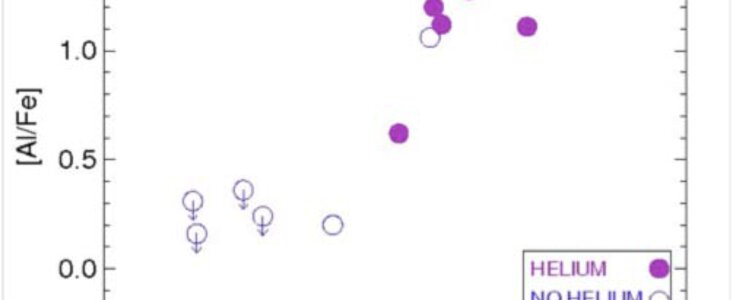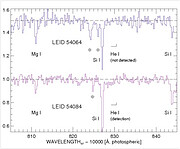Helium Enhancement and the History of Omega Centauri
10 January 2011
Once, the stars of any individual globular cluster were interpreted as a single population, all having formed at the same time. Over the last decade, however, evidence for multiple stellar populations has emerged. New work led by Andrea Dupree (Harvard-Smithsonian Center for Astrophysics) now shows direct evidence for helium abundance variations—a sign of multiple histories—in the bright globular cluster Omega Centauri.
The team further finds that helium abundance is correlated with overall metal abundance and especially with enhancement of light elements such as aluminum and sodium, which are produced by high-temperature hydrogen burning within stars (geminiann11001a). Helium enhancement is thus likely a consequence of second-generation stars formed from enriched material processed by the earlier generation of stars.
Dupree and collaborators, Jay Strader (Harvard-Smithsonian Center for Astrophysics) and Graeme Smith (University of California Observatories/Lick Observatory), used the Phoenix high-resolution spectrograph on Gemini South to measure the near-infrared helium line at a wavelength of 10830Å (geminiann11001b). The strength of this transition is correlated with the helium abundance. In addition to the Gemini data, the team used optical observations with the MIKE spectrograph on the Magellan Clay telescope to determine the overall and light element abundances of this sample of 12 red giants within Omega Centauri.
Links
- The work will appear in The Astrophysical Journal, and a preprint is now available.



